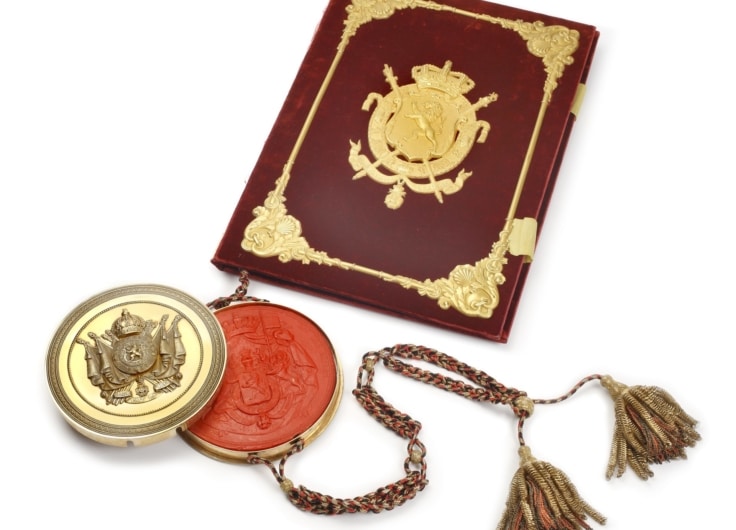Orange: a Colour that Unites and Divides
You can’t miss it in the Netherlands on King’s Day or during international soccer games. The whole nation is covered in orange. But do you know why the Dutch wear orange hats and eat orange cakes instead of, let’s say, yellow ones or red ones? There’s a fascinating historical reason for this. The love for this bright colour originates from William of Orange who led the Dutch War of Independence against Spain in the sixteenth century.
‘O, how quiet they are! How quiet the Belgians are!’
This taunt, echoing across the sites of the 1988 Belgian pop festivals, was indeed met with a deafening silence. It was chanted by small groups of youths, dressed conspicuously in flags and strange headgear, many with painted faces. What reduced the Belgians to silence was not only the slogan but also the predominant colour in this masquerade: a garish orange that painfully underlined the significance of the words.
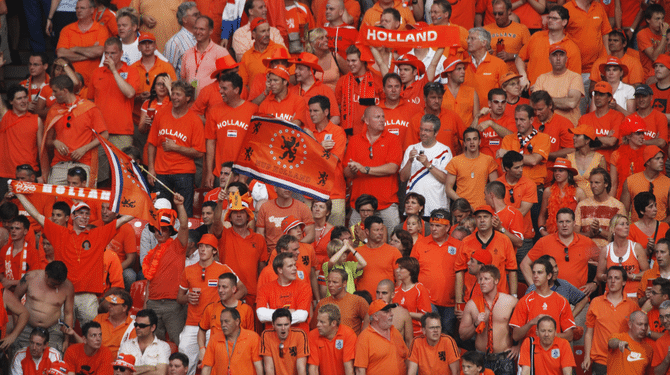 Dutch soccer fans
Dutch soccer fansAt first glance its significance was obvious to everyone: the Dutch football team had just become European Champions while the Belgian Red Devils had failed even to qualify. But although this particular interaction was tied to a specific set of events, for the participants it also formed part of an old, one might almost say timeless, ritual. Those particular young people may not have had much historical awareness, but they were playing a game that embraced four centuries of history.
For most of them the exact references were undoubtedly buried in some historical subconscious, but perhaps that is why they could have so much impact; they summoned up responses which a judicious historical approach would have smothered. The colour Orange, which absorbed all these historical memories and bundled them together into a single icon, functioned as a powerful detonator for these reflex reactions.
 The Dutch celebrate King William-Alexander's birthday on 27 April
The Dutch celebrate King William-Alexander's birthday on 27 AprilThe father of the nation divides and unites
It was a pure dynastic accident that added the French principality of Orange to the German and Netherlandish estates of the eleven-year-old German nobleman William of Nassau. But the consequences of that accident were far-reaching. When the higher nobility in the Netherlands started to grow restless under the Spanish King Philip II, it was Prince William who held the senior title. In spite of his intimacy with the Habsburg court, in which he had largely been brought up, and despite his reservations about any form of religious fanaticism, he gradually emerged as the ‘natural’ leader of the Dutch Revolt.
 Portrait of Prince William of Orange (William the Silent), Adriaen Thomasz. Key, 1579
Portrait of Prince William of Orange (William the Silent), Adriaen Thomasz. Key, 1579© Rijksmuseum
In his search for something that would mobilise and unite together his heterogeneous troops, this dynastic accident again served him well. The name of his principality was also a colour that was heraldically unusual and therefore instantly recognisable.
The armies with which he invaded the Netherlands in 1568 rallied behind the Prince’s flag of orange, white and blue. Even the republic that emerged from the revolt presented itself to the outside world under the ‘orange-white-blue’. After William’s death, however, ‘orange’ was less and less able to hold the young republic together.
As ‘Stadholders’, the House of Orange-Nassau exercised important executive and military functions in each of the provinces. Since they no longer represented the Habsburgs as viceroys or provincial governors, however, many people in the republic believed that ultimate sovereignty rested with the provincial Estates.
Consequently, they regarded the Stadholders with suspicion and at times with outright hostility. Moreover, as Stadholders William’s immediate successors were drawn into the complex political and religious conflicts between the orthodox Calvinists who looked to Orange and the religious moderates who championed the Estates.
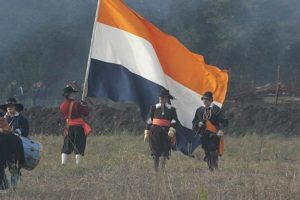
In these circumstances it is not surprising that the orange stripe in the Republic’s flag was soon replaced by red, definitively so after the first Stadholderless Period (1650-1672). Although various reasons were given for the change, it was clear that orange had become the colour of the Stadholder’s party rather than of the nation as a whole.
This was even more the case in the eighteenth century when the restored Stadholders started to behave more and more like monarchs, and during the Batavian and French period when they disappeared from the political stage.
It was precisely during this period when the Stadholders were losing power to the enlightened bourgeoisie that they became the object of a movement of popular support which took light-hearted if at times also violent forms, the followers of which decked themselves in orange ribbons and bows.
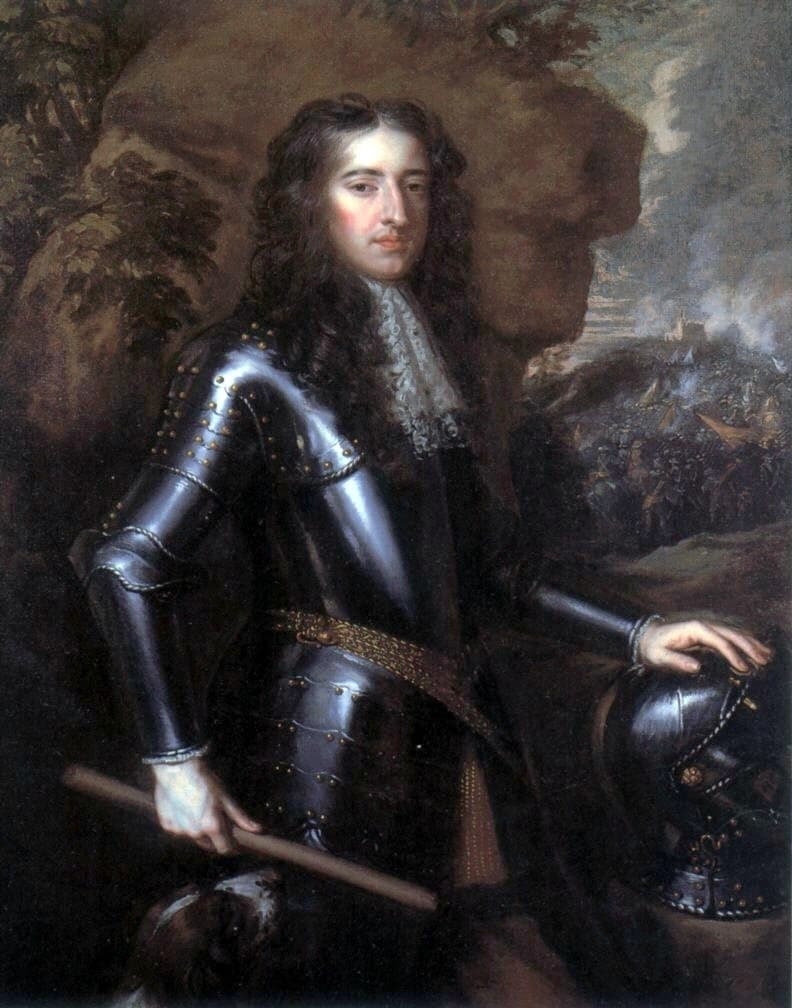 Portrait of William III (William of Orange), King of England, Stadtholder of the Netherlands, Willem Wissing, between 1680 and 1710
Portrait of William III (William of Orange), King of England, Stadtholder of the Netherlands, Willem Wissing, between 1680 and 1710© Rijksmuseum
In an attempt to prevent a rebellion, in 1784 the Estates of Holland even banned the wearing of orange. Incidentally, the growth of Orange as an ideological force was not confined to the Netherlands but was international. After a bloody encounter with Catholic militia in the village of Loughgall in 1795 a group of Irish Protestants swore allegiance to the memory of William III, the Orange Stadholder who a century earlier had put an end to the Catholic rule of Britain’s James II.
This eventually became the Orange Order whose purpose was to testify to Protestant liberties anywhere on British soil. The annual Orange Marches that it has organised since then have been a smouldering fuse in the powderkeg of Northern Ireland, particularly in the last decades of the twentieth century. In former British colonies, too. this influential organisation proudly holds Orange aloft as a symbol of militant Protestantism.
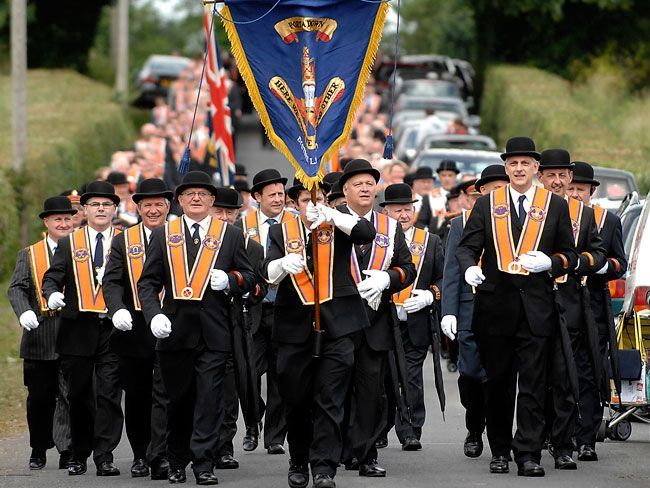 March of the Orange Order in Northern Ireland
March of the Orange Order in Northern IrelandIn the Netherlands Orange gradually lost its ideological character. After the establishment of the Orange monarchy in 1813, the Orange movement ceased to be illegal and a much broader, emotional form of Orangism developed.
However, it did not immediately become the main unifying element of the nation. Orange remained the colour of the common man, who viewed with mistrust the liberal elites who dominated the Dutch state. It was not until the last two decades of the nineteenth century that this began to change. During this period when democratisation, expansion and social pillarisation threatened the unity of Dutch society, the political elites realised that they needed a unifying principle.
Since the constitutional reforms of 1848 had left the Princes of Orange with very little political power, they seemed ideally suited to fulfil this symbolic role. Unfortunately, William II and William III had so little charisma that they achieved very little.
It was only with the accession of Queen Wilhelmina in 1890 that an emotional bond between the monarchy and the people developed that would last for over a century. The renewed bond between the House of Orange and the Dutch people was ritually confirmed at Wilhelmina’s inauguration in 1898 and during the celebrations of 1919, when the predominant colour was orange.
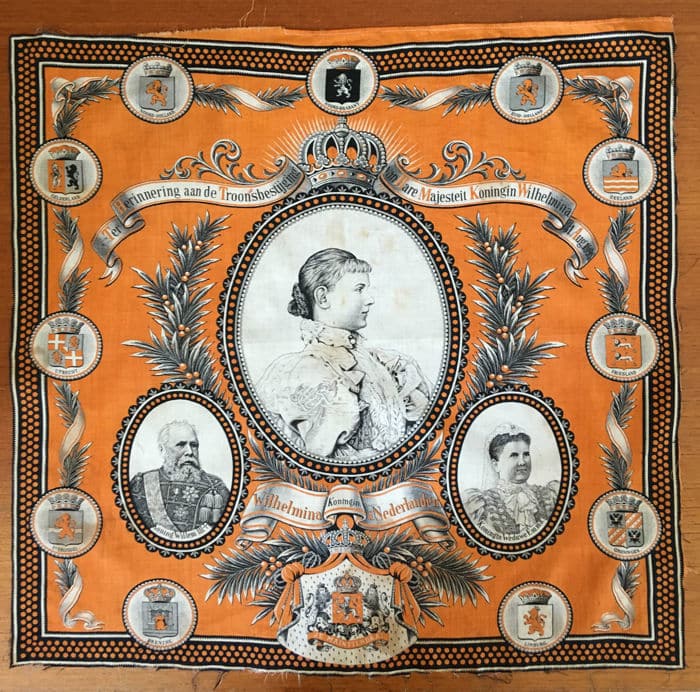 Celebration cloth on the occasion of the inauguration of Queen Wilhelmina 31 August 1898
Celebration cloth on the occasion of the inauguration of Queen Wilhelmina 31 August 1898Against this background the historical perception of William the Silent also changed. While the 300th anniversary of his death in 1884 had been marked by fundamental ideological disagreements, the 400th anniversary of his birth in 1933 saw the various sections of the population uniting to commemorate the ‘Father of the Nation’.
The myth of Orange was not troubled by the historical uncertainties surrounding him. In particular, by emphasising his Erasmian attitude to religion, even the Dutch Catholics could incorporate William of Orange into their pantheon.
If the figure of William of Orange fostered Dutch unity, the colour orange continued to be divisive. A growing number of people thought that orange should be reintroduced into the Dutch flag, but since the most vociferous supporters of the change were the self-confessed fascists of the National Socialist Movement, nothing came of it.
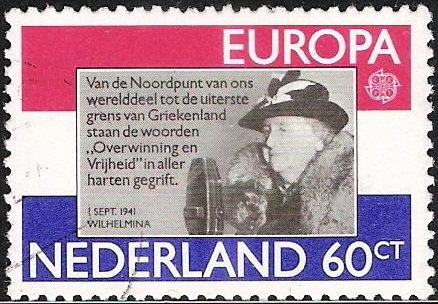 Dutch stamp
Dutch stampIn February 1937 the red, white and blue was officially proclaimed to be the flag of the Netherlands, which was all the more painful for the orange supporters because the Union of South Africa had chosen Orange, White and Blue in 1928. But their revenge was sweet. Banned from the national flag, Orange made increasing headway on its own. The cult of Orange which underpinned Dutch nationalist activities during the Second World War was an example of this.
After the war, when Fascism was no longer regarded as a threat, a blind eye was turned to the fact that collaborationist circles had also made great play with Orange Since then Orange flags and banners (with at the most, red, white and blue borders) have comfortably outnumbered the official red, white and blue at celebrations and sporting events.
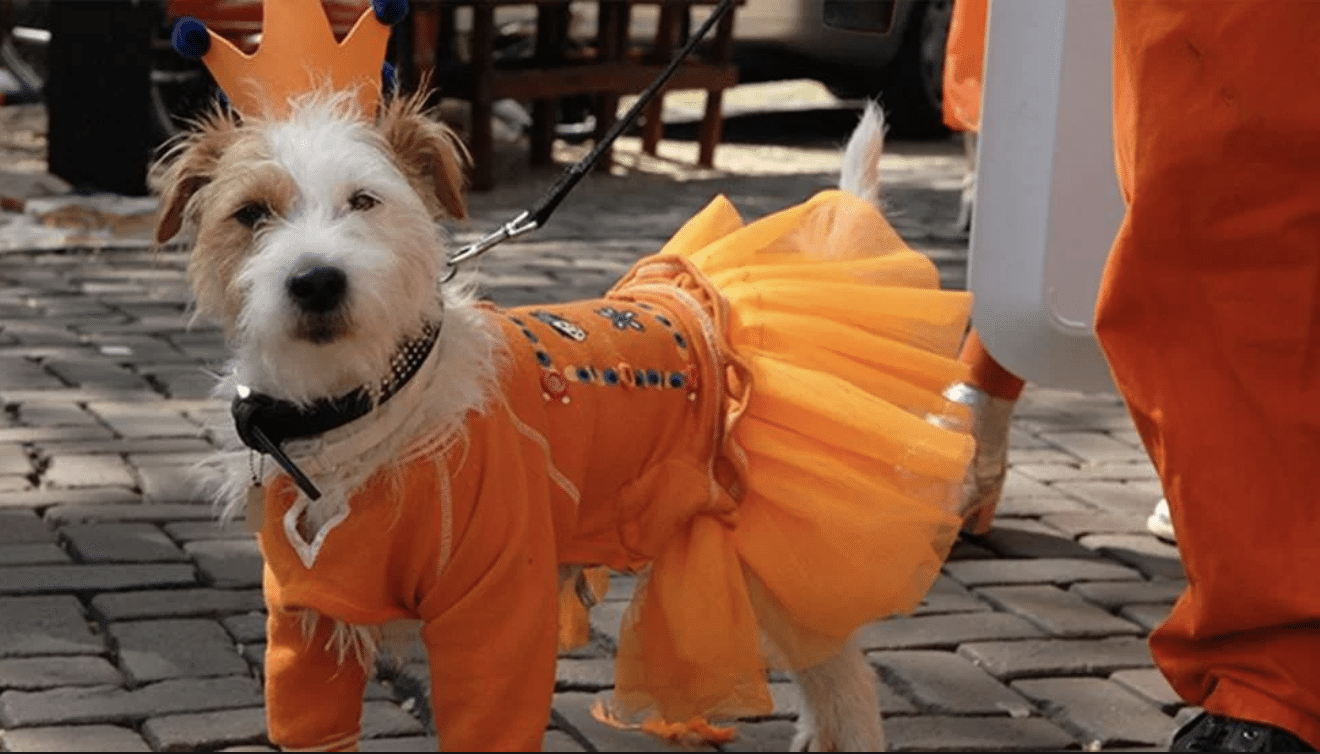 Orange has become part of everyday life in the Netherlands
Orange has become part of everyday life in the NetherlandsOrange has also become part of everyday life; it is no longer the colour of the monarchy or the national elites but of the whole Dutch nation. But though it has broken away from the specific figure of William of Orange, its present power still draws heavily on its historical connotations. One of its strongest features is that the colour orange can be associated with both sovereignty and resistance.
Orange in Belgian party conflicts
Whereas in the Netherlands the growing popularity of Orange has become a visible symbol of successful nationhood, in Belgium it has almost always led to discord. The simple fact that Belgian independence resulted from a struggle against the Orange dynasty obviously has much to do with this.
The 1831 Constitution laid down that no descendant of the House of Orange-Nassau could ever ascend the Belgian throne and the first version of the Belgian national anthem made no attempt to disguise the hatred for Orange. Anyone who still dared to profess himself an ‘Orangist’ was automatically accused of being a traitor.
However, this Belgian Orangism was only partly based on active sympathy for the Orange dynasty, past or present. Much more important was fear of the negative economic or cultural consequences of the split with the Netherlands. So, as the Belgian state became consolidated, such Orangist sympathies became more marginalised.
 Louis Tobback, the previous mayor of Leuven and a self-declared Orangist
Louis Tobback, the previous mayor of Leuven and a self-declared OrangistA working-class variant of Orangism lived on for a long time, however; it surfaced, for instance, in early Ghent socialism. Even the previous Socialist mayor of Leuven, Louis Tobback, is still happy to label himself an Orangist. Although he too regrets the missed economic and strategic opportunities of the United Kingdom of the Netherlands more than the loss of the Orange dynasty.
Only from the 1860s on can one observe any active affection for Orange in Belgium. But then it was to be found exclusively among the Liberals who saw their battle with the Catholics as a continuation of the 16th-century Protestant resistance to the Catholic ruler Philip II.
In Antwerp the Liberals set up a Beggars Society (Geuzenbond) at which they enthusiastically sang the anti-clerical Beggars’ Song (Geuzenlied); in 1876 the 300th anniversary of the Pacification of Ghent was celebrated in Ghent with great pomp.
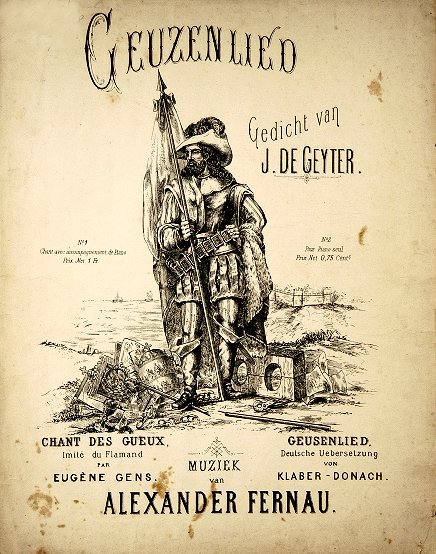 Anti-clerical Beggars’ Song
Anti-clerical Beggars’ SongThe Brussels Liberals also joined in to extol the Revolt. When planning the Kleine Zavel park in the 1880s the Brussels City Council chose an iconographic design that had the Dutch Revolt as its theme. The large statues of Egmont and Hoorne are surrounded by a series of smaller figures representing Belgian scholars and politicians from the Renaissance. Among them are Mercator and Ortelius, but also Marnix van Sint-Aldegonde and, as the French inscription puts it, ‘Guillaume le Taciturne’ (William the Silent).
The Kleine Zavel statues tell us a great deal about Belgian liberalism’s relationship with Orange in the late nineteenth century. Firstly, William of Orange was only one small part of the broader cult of the Revolt or the Beggars. In the process of image-forming he was no more prominent than, and indeed sometimes subordinate to, figures such as Egmont, Hoorne or Marnix, all of whom had played important roles in the context of the Southern Netherlands.
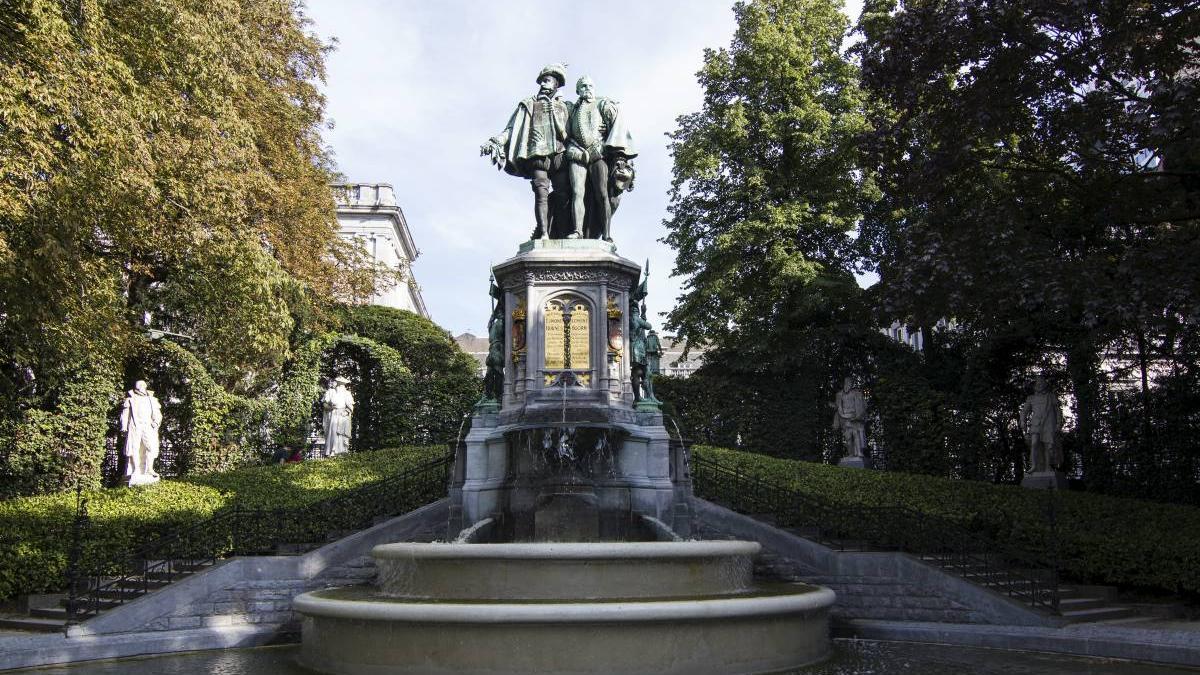 Statues of Egmont and Hoorne in the Kleine Zavel park in Brussels
Statues of Egmont and Hoorne in the Kleine Zavel park in BrusselsFurthermore, Belgian Liberals tended to use the epithet ‘the Silent’ rather than the noble title ‘of Orange’. After all, to patriotic Liberals in the 1880s ‘William of Orange’ meant in the first place the despot to whom they had shown the door fifty years earlier. The William the Silent they extolled had been a hero in spite of, not because of, the dynasty to which he belonged – a hero of foresight and liberal thinking.
By detaching William the Silent from his dynasty, the Belgian Liberals also showed that they were not seeking reunification with the Netherlands under the House of Orange. Even in the cultural movement for a Greater Netherlands which Liberal Flemish militants developed in the second half of the nineteenth century, any appeal to the actual House of Orange was virtually absent. Until the First World War, Orange remained a focal point for liberal sentiments, not for geopolitical change.
The colour of radicalism
The German invasion of 1914 put boundary change on the political agenda of a small group of radicals. For this heterogeneous group of Activists, creating an independent Flanders took priority over any ideological issues. That made cross-fertilisation between Liberal and Catholic Flemish radicals possible.
A striking instance of this was the way that Catholic activists adopted the rhetoric of the Beggars and associated it with a Greater Netherlands programme. Incidentally, that programme was very different from that of the 19th century Liberals because it was based on their common language. In other words, francophone Belgium would have been excluded from the Netherlands.
This ‘common language’ variant of the Greater Netherlands movement had absolutely nothing in common with William of Orange’s dreams. And yet during the interwar years (paradoxically enough the period when the radical Flemish movement was becoming increasingly Catholic) it would become firmly rooted in the imagination of the radical Flemish nationalists.
More than that, by appealing to Orange the interwar Flemish nationalists seemed to be trying to show that their radicalism was different from the pre-war Flemish Movement, which had been accused of provincialism and romantic extravagance.
Flemish nationalists showed their devotion to William of Orange not only by participating enthusiastically in the Orange commemoration of 1933, but also by giving the colour orange a prominent place in their own heraldry. It was no accident that this development was most apparent in the ranks of the fascist Verdinaso, the Union of Diets [Dutch] National Solidarists, founded in 1928 with the aim of forming a ‘Diets’ empire of Belgium, Luxemburg and the Netherlands. In 1932 the party introduced a new flag, showing a blue sword, plough and cogwheel intertwined on a white and orange ground. There was no reference to traditional Flemish nationalist symbolism.
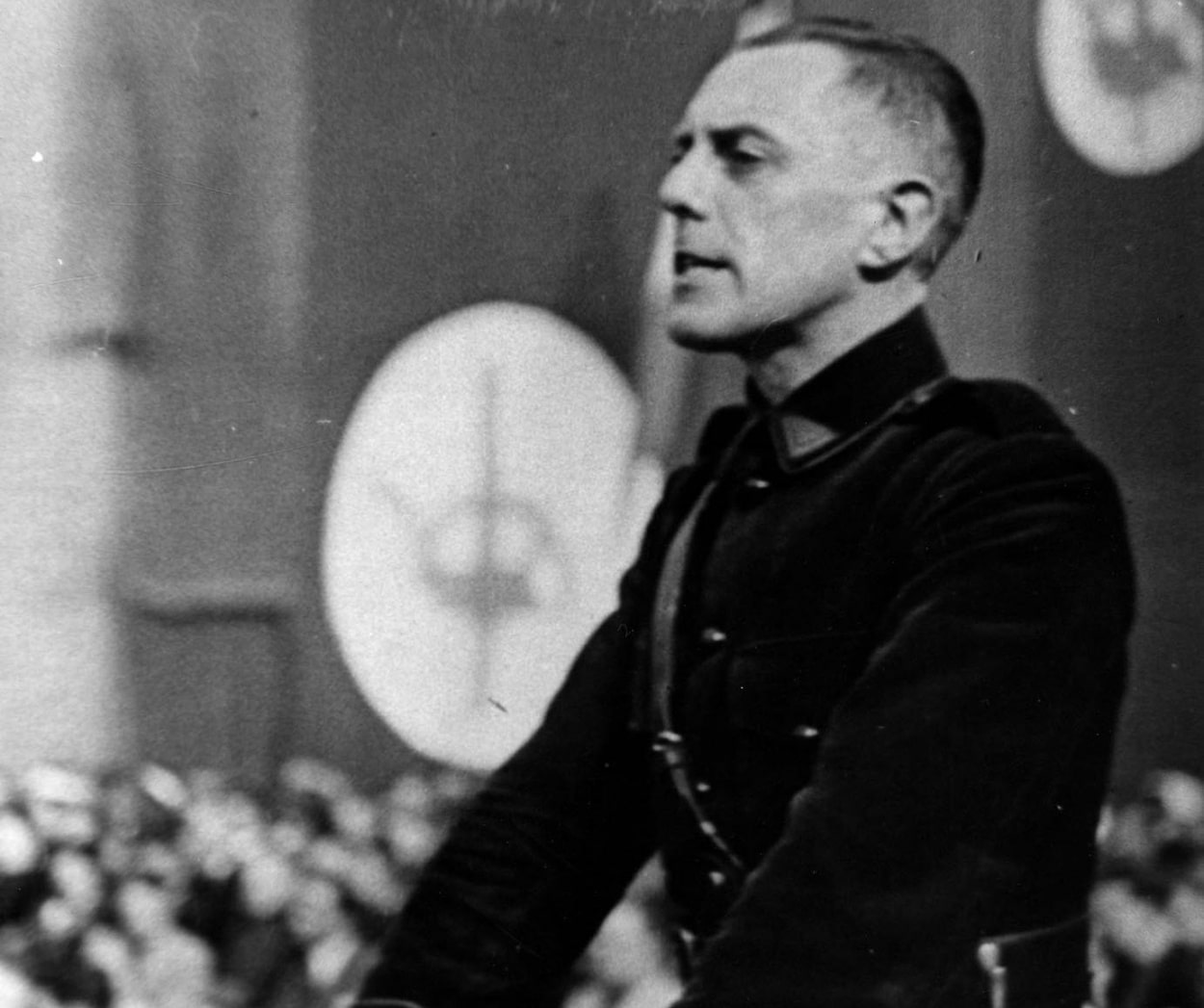 Joris Van Severen, leader of Verdinaso
Joris Van Severen, leader of VerdinasoFrom 1934 on, Verdinaso’s leader Joris Van Severen began to campaign actively for a return to the Seventeen Provinces of William of Orange, and attempted to gain support for his movement in the Netherlands and Wallonia. After his violent death in the summer of 1940 his party honoured him as the ‘Father of the Nation’.
Sharing some of Verdinaso’s views, but more traditionalist in its imagery and approach, was the Flemish National Union (VNV) which was founded in 1933. Its orange flag with a blue and white delta symbol in the middle was adopted in 1935, but the party also continued to use the traditional Flemish lion and the nationalist fulmar symbol.
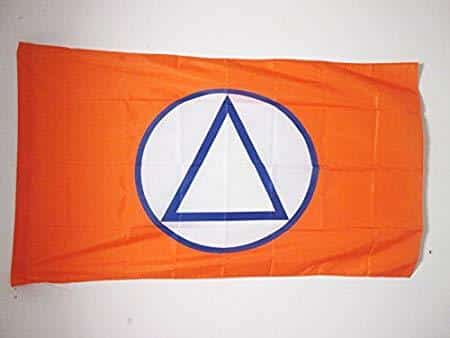 Flag of the Flemish National Union (VNV)
Flag of the Flemish National Union (VNV)Even after the party chose to collaborate with the German occupiers during the war, its magazines often featured illustrations in which the ‘Father of the Nation’ overshadowed the historical and living heroes of Flemish nationalism.
The status of Orange in this Flemish Nationalist propaganda was highly ambiguous. On the one hand it seemed to justify far-reaching collaboration that looked beyond narrow Flemish interests; but on the other, the references to the 16th century Dutch revolt always contained an element of ‘internal resistance’.
Probably because of the ‘resistance’ connotation Orange played an important role in the post-war revival of Flemish nationalism
This was due not just to the revolutionary sentiments they could arouse but also to the fact that in February 1941 the German occupiers had banned any reference to a political Greater Netherlands. Growing discontent in Flemish Nationalist circles with the VNV’s excessive collaboration was expressed largely through references to the Dutch Revolt. The ‘One Netherlands’ group which developed within the VNV also used the name ‘the Beggars’.
It was probably because of this ‘resistance’ connotation that Orange played an important role in the post-war revival of Flemish nationalism. By rallying behind Orange, various youth movements, student organisations and intellectual think-tanks were able to retain the radical nationalist elements that had justified collaboration while at the same time basking in the reflected glory of the Resistance.
In 1952 the Orange Flag was carried into the Flemish Nationalist Song Festival to loud cheers, and to this day the annual festival closes with Netherlands’ national anthem, the Wilhelmus.
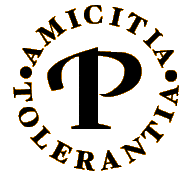 Logo of the Order of the Prince
Logo of the Order of the PrinceHowever, as the years passed and Flemish Nationalism regained political credibility, Orange elements seemed to have been relegated to the intellectual margins. In 1955, the same year that the Flemish nationalist party called the Volksunie (People’s Union) held its first congress (and opted firmly for yellow and black), the Orde van den Prince (Order of the Prince) was founded in Kortrijk. To this day the Order still operates under William the Silent’s motto of ‘Amicitia et Tolerantia’ but more as a Greater Netherlands Society Club than as an active political organisation.
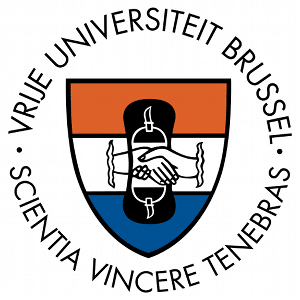 Seal of the Free University of Brussels
Seal of the Free University of BrusselsThe orange-white-blue heraldic seal of the Free University of Brussels which was established in 1970 reflects a similar intellectual strand of Greater Netherlands intellectualism, though it might also be seen as a return to the liberal Sea Beggars romanticism of the late 19th century. But even such a radical right-wing think-tank as the Delta Foundation has opted for an orange design, and despite its professed pagan beliefs sees William of Orange as a shining example.
The Netherlands is orange; Belgium is not
When in July 2008 the Dutch right-wing populist politician Geert Wilders tried to win support for his Greater Netherlands project in Flanders with a newspaper campaign, he frequently referred to William of Orange’s dream of a Greater Netherlands. In so doing, he undoubtedly over-estimated the resonance of Orange in Flanders today.
While in the Netherlands the historical figure, and more especially the colour, developed during the last century into universally recognisable symbols of unity, in Belgian history they have always served as a vehicle for particular, concrete political objectives. Orange was used by the Liberals against the Catholics, by radical Flemish nationalists against the cultural nationalists, by the conditional against the unconditional collaborators. In the Belgian imagination William of Orange has never become part of a shared heritage.
But perhaps it is in itself remarkable that since the end of the 19th century William has hardly aroused any negative feelings in Belgium. After all, was he not the founder of the dynasty against which Belgium fought for and achieved its independence? And is it not the colour with which he is associated also the colour by which its neighbour constantly and self-confidently presents itself to the outside world in a way that can only highlight Belgian disunity the more strongly?



